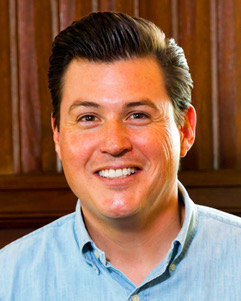
Michael Maher
Written by Michael Maher
California is synonymous with environmental stewardship and aggressively addressing the serious issue of air pollution. In 1967, Ronald Reagan, then governor of California, unified statewide environmental efforts creating the State Air Resources Board. California had made its mission to lead the nation and the world in the transition to clean energy. Through a series of mandates and initiatives, the state aims to achieve 100% clean energy by 2045. The most prolific current initiatives being pursued to attain these goals are solar and wind power for electricity and battery electric vehicles (BEV) for transportation.
Unfortunately, each of these technologies comes with significant challenges that must be overcome if these strategies are to remain the primary means of California’s green energy transition.
Hurdles that solar and wind power must overcome are very similar. They include intermittency, grid integration, high capital costs, degradation of equipment and the need for electric storage technology. It is well known that neither of these technologies can provide full time electrical production. Solar provides more predictable reliability with its optimum production regularly occurring at specific times during daylight hours. Wind power is less predictable, and both technologies require energy storage to retain the energy generated during peak production for delivery during decreased or zero production hours.
The technology for these “battery banks” or storage systems, primarily lithium-ion battery-based, remains expensive and is often sourced from overseas producers, with raw materials originating from countries facing significant human rights and modern slavery accusations.
There are additional national security concerns and cyber implications from sourcing overseas energy storage systems into our critical infrastructure. Safety concerns are also significant with these batteries because of issues like thermal runaway, which can lead to overheating and fires as well as releases of poisonous gases into our communities.
Solar and wind power, along with electric storage systems, do not last as long as legacy power generation system components and also incur greater costs. They will need to be augmented and replaced frequently, thus reducing large scale energy availability and increasing environmental impact and cost. Finally, large scale solar and wind development is most often sited large distances from electric user bases, requiring the construction of vast arrays of transmission lines to transport the electricity. This is not only a problem because the growth of new electricity infrastructure is well behind the growth plan of solar and wind power installations, but also because moving the electricity over great distances can suffer wattage losses exceeding 5%.
There have been many initial positive signs in the adoption of battery electric vehicles (BEV). Nearly 10% of all passenger vehicles on our California roads are BEV, and according to Gov. Newsom’s office, the market share of zero emission vehicles (of which BEVs are a primary component) reached 26.7% of vehicle sales in Q3 2023. These numbers appear to put the state’s 2026 model year target of 35% within reach. However, concerns have risen that early adopters with greater financial means than average buyers have made outsized shares of BEVs purchased over the past few years, and traction for increased sales to middle-class income buyers has been much weaker.
Further, the industrial firepower that will be needed to achieve California’s targets is being threatened by our slow infrastructure growth. I have been told by local automobile dealers that they are unable to install necessary BEV charging and support equipment because the electric utilities have said they can’t bring power to these systems for 2-3 years. Finally, we need to be aware that many of the subsidies and cost savings that are being enjoyed by wealthier buyers of BEVs are being subsidized via higher electric rates that are being paid by many of our middle and below middle-class income earners. I do not believe that a poll asking our Valley citizens if less well-off people should pay more so that wealthier people can buy greener vehicles would show this policy to be popular.
Other technologies that address many of these hurdles are starting to gain traction in the market. Hydrogen fuel, which has long been determined to be too expensive for transportation, has quietly approached cost effectiveness. For heavy transportation like the Class-8 trucks that move all our goods across the state, hydrogen fueling offers substantially more productivity than BEV technology. Combine the fueling time savings of several hours with the reduction of weight from BEV to hydrogen of over 5,000 pounds, users of hydrogen Class-8 trucks are reporting 100% productivity advances over BEVs. Also, the complaint that hydrogen fueling stations are few and far between is less valid when a hydrogen truck can take a full load over 250 miles and return home for re-fueling. This will be augmented by newer technologies that will distribute hydrogen fueling to make it even more available than gasoline and diesel.
California’s green goals as well as our Nation’s push to clean energy will not be attained if we ignore the challenges ahead. We must navigate this energy transition with experienced hands, or we run the significant risk of crippling our economy. It will take vision, leadership, and pragmatic understanding to cut though bureaucratic hurdles, special interest groups and legacy industry interests to deliver abundant clean energy at far lower costs then what each of us pay now. This not only can be done but it must be done as California’s energy infrastructure is in crisis.
In future articles, I’ll explore the new technologies in energy production, nuclear and advanced sustainable fuels that will provide more affordable solutions for the road ahead and make it smoother for all of us.
Michael Maher is a serial entrepreneur with extensive background in industrial electrical construction, advanced future fuels, energy production, and national security. He served in the U.S. Navy operating a nuclear power plant fast attack submarine and worked national security matters as an FBI special agent. He resides with his wife and two sons in Fresno County.






